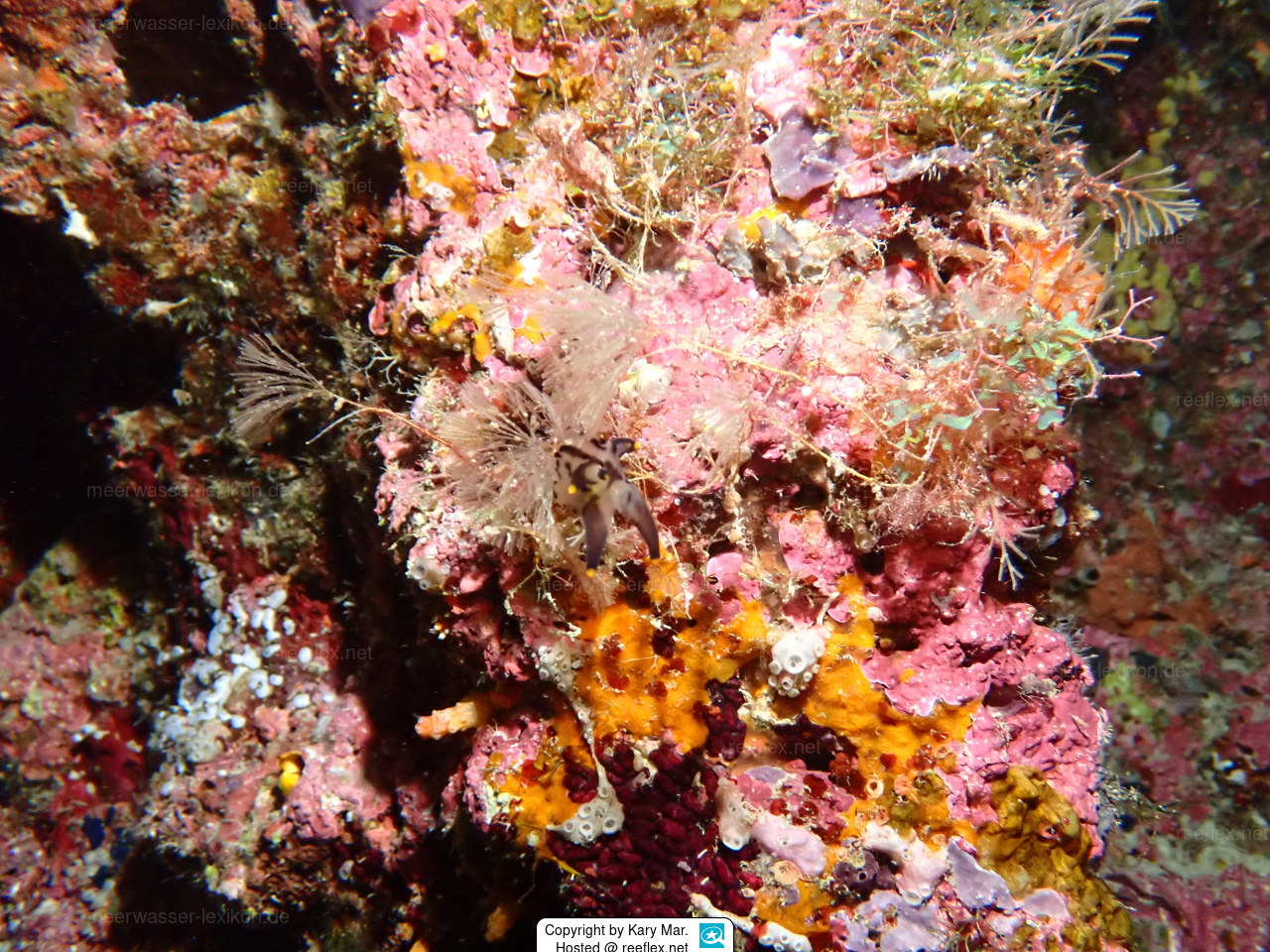Info
Caulibugula inermis is a species of bryozoan from the Bugulidae family, which is widespread in the Indo-Pacific.
Bryozoans of this family form upright, branched, unjointed and single-layered colonies attached by rhizoids.
The zooids are long, parallel-sided, with an almost completely membranous front; the side walls are slightly calcified; marginal spines are usually present.
Stalked “bird's head” avicularia are characteristic. The ovicells are independent and hyperstomial, with membranous ectooecium.
The nudibranch Thecacera feeds on bryozoans of the species Caulibugula inermis, such nudibranchs “steal” cnidocytes from hydrozoans and bryozoans while feeding on them.
Bryozoans of this family form upright, branched, unjointed and single-layered colonies attached by rhizoids.
The zooids are long, parallel-sided, with an almost completely membranous front; the side walls are slightly calcified; marginal spines are usually present.
Stalked “bird's head” avicularia are characteristic. The ovicells are independent and hyperstomial, with membranous ectooecium.
The nudibranch Thecacera feeds on bryozoans of the species Caulibugula inermis, such nudibranchs “steal” cnidocytes from hydrozoans and bryozoans while feeding on them.







 Kary Mar
Kary Mar



